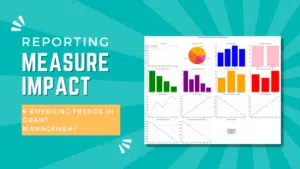
How to Measure and Report Grant Impact
Grant Impact Reporting View Interactive Tour Schedule a 1-on-1 Demo View Interactive Example How to Measure and Report Grant Impact As a
When it comes to running an award program, the judging phase is one of the most crucial components. This guide aims to provide an exhaustive overview of the judging process, ensuring clarity, fairness, and thoroughness. Looking for the Ultimate Guide to Running A Member Recognition Award – Check this out.
The first step is adopting an award management software, like Reviewr, which offers specialized tools tailored for award management. Such platforms optimize efficiency, minimize human error, and ensure a streamlined judging process.
Once nominations are collected, it’s vital to allocate them to judges in a manner that ensures a comprehensive and fair evaluation. Here are the three primary methods:
Committee-Based Scoring: Here, dedicated teams or committees assess nominations that fall under specific categories or awards. This approach ensures that experts familiar with a particular field or subject handle relevant nominations.
Automatic Assignments: Algorithms within the software can randomly distribute nominations among judges. This can be based on:
Manual Assignments: For a more hands-on approach, program managers might choose to allocate nominations to specific judges, ensuring that every entry is assessed by the most appropriate judge.
Upon receiving their assignments, judges should be able to:
Log into an Intuitive Judging Platform: Judges should easily access the nominations allocated to them, complete with supporting documents and additional notes.
Save & Resume: Recognizing that thorough evaluations can be time-consuming, judges should have the freedom to save their progress and return at a later time.
Equitable Evaluation: It’s essential to mask personal identifiers or any data that might introduce bias, guaranteeing a neutral and unbiased judging process.
Side-by-Side Comparison: This feature can be especially valuable when judges are torn between multiple outstanding nominations. They can juxtapose nominations, supporting documents, and their notes, streamlining the decision-making process.
An efficient scoresheet is simple, clear, and aligned with the award’s objectives. Here’s an example:
Nominee Name: [Blinded for Fairness] Category: [Category Name]
| Criteria | Score (1-10) | Notes |
|---|---|---|
| Membership Involvement | ||
| Impact on the Community/Industry | ||
| Individual Award Criteria #1 | ||
| Individual Award Criteria #2 | ||
| Overall Impression |
Total Score: [Out of 50]
Once all judges have completed their evaluations:
Ranking & Visibility: The software should automatically aggregate scores and rank nominees. For clarity, results can be viewed on a per-award or per-category basis.
Further Review Phases: If your program requires subsequent rounds of assessment, top-ranking nominees can effortlessly progress to the next stage.
An effective judging process is both an art and a science. With the right combination of technology, strategy, and human insight, award programs can ensure that the most deserving candidates shine through. Using platforms like Reviewr can significantly simplify the process, ensuring that the focus remains on recognizing and celebrating excellence.

Grant Impact Reporting View Interactive Tour Schedule a 1-on-1 Demo View Interactive Example How to Measure and Report Grant Impact As a

Reference Collection View Interactive Tour Modernizing Reference Collection for Awards Grants and Scholarships In the competitive landscape of awards, grants, and scholarship
